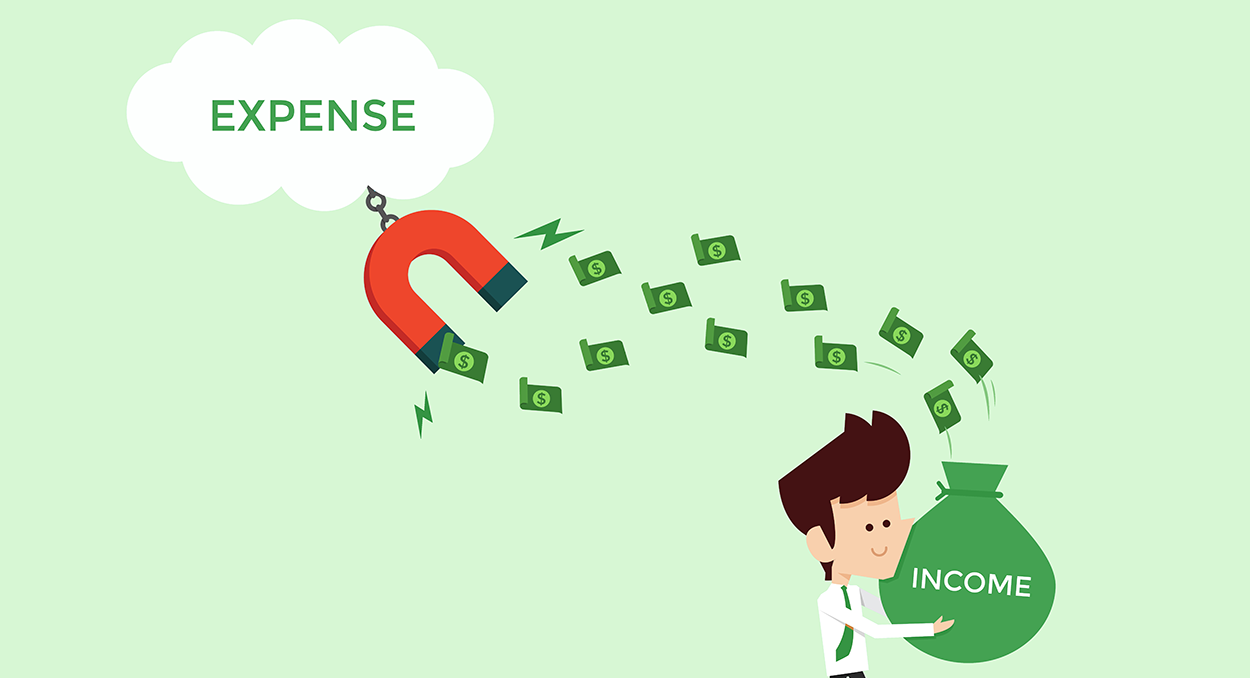Expenses are all costs incurred by companies or businesses for the operations they carry out to generate revenue and make profits, and common expenses between companies include payments to suppliers, employee wages, lease contracts, equipment depreciation, and many other expenses. Companies are allowed to delete tax-exempt expenses from their tax returns to reduce their annual taxable income and the liability incurred by them.
Expenses can be considered a reduction in the value of the asset as it is used to obtain revenues, and the expenses are usually transferred to consumption if the asset is to be used in the long term and charged proportionately over the years. If the expenses are for an asset that is consumed immediately, such as salaries, They are charged to the expense account directly, as the International Accounting Standards Board defines expenses as a gradual reduction of economic benefits during a certain period in the form of transfers, cash flows, or depletion of the number of assets, so it is possible to shorten their definition as external flows and the use of assets as part of the company’s operations to generate revenue.
What are the types of accounting expenses?
Expenditure can be considered a wide section that includes many forms and varieties, but mainly the expenditures were divided into three basic types, and the following is an explanation of the most prominent of what came in each of them:
1- Capital expenditures
The concept of “capital expenditures” refers to the funds that companies use to purchase, upgrade, or extend the life of an asset they have. Capital expenditures are designed to be used to invest in assets and improve the long-term economic position of the company. Some cases may be in large amounts that may affect the companies’ budget, so it must be done to ensure that the revenues that have been identified in the budget can cover the expenses effectively, and capital expenditures may differ from other expenses in that they are concerned with the long-term outlook for the development of companies, and investors and analysts are interested by monitoring capital expenditures, because they may indicate the extent of the executive management’s investment in improving the company’s economic situation in the long term. Here is an explanation of the most prominent examples of capital expenditures:
- Buildings and properties
The purchase or development of buildings and real estate is considered a capital expenditure since it is an asset that has a useful purpose for many years. Facilities are usually obtained to take the necessary loans to purchase real estate and property, and the expenses are paid as interest on these loans and financing. - Software development expenses
Where the expenses of updating, developing, and working on software are considered capital expenditures that can be used over a period of years. - Expenses on vehicles
Naturally, companies need many vehicles to carry out distribution and customer service operations, so maintenance and leasing expenses are considered capital expenses.
2- Operational expenses
Operational expenses are costs that are paid during the performance of the company’s vital commercial or operational activities, and these expenses differ from one industry to another. A business activity in a particular industry may be classified as a financial or investment activity in other industries. Operating expenses include: salaries, insurance, marketing, inventory costs, leasing, research and development, and many others. These expenses are mandatory to ensure business continuity and achieve profit and revenue from the company’s operations. Operational expenses can be easily identified by looking at the accounting books of a company, as operating expenses affect the way directly on the cost of production or service, and the following are the most prominent examples of operating expenses:
- Telephone expenses
These are the expenses incurred on land lines and mobile phones, as some companies sometimes compensate their employees for their phone expenses as well. - Travel expenses
These are the expenses that companies pay during official visits to their employees. - Expenses for using the services
These expenses represent what the company pays for certain services, such as electricity and water.

3- Administrative expenses
The concept of “administrative expenses” refers to expenses incurred by the company on activities that are not directly related to the productive process, such as manufacturing, sales, etc. It is paid as part of the basis of business operations, or it may be semi-variable and can be paid once or twice without being incurred by the company on an ongoing basis. Administrative expenses may include each of the following examples:
- Salaries of employees in senior management.
- Procurement services.
- Office, legal, and accounting expenses.
- IT expenses.
Read also: Steps to create the corporate image



